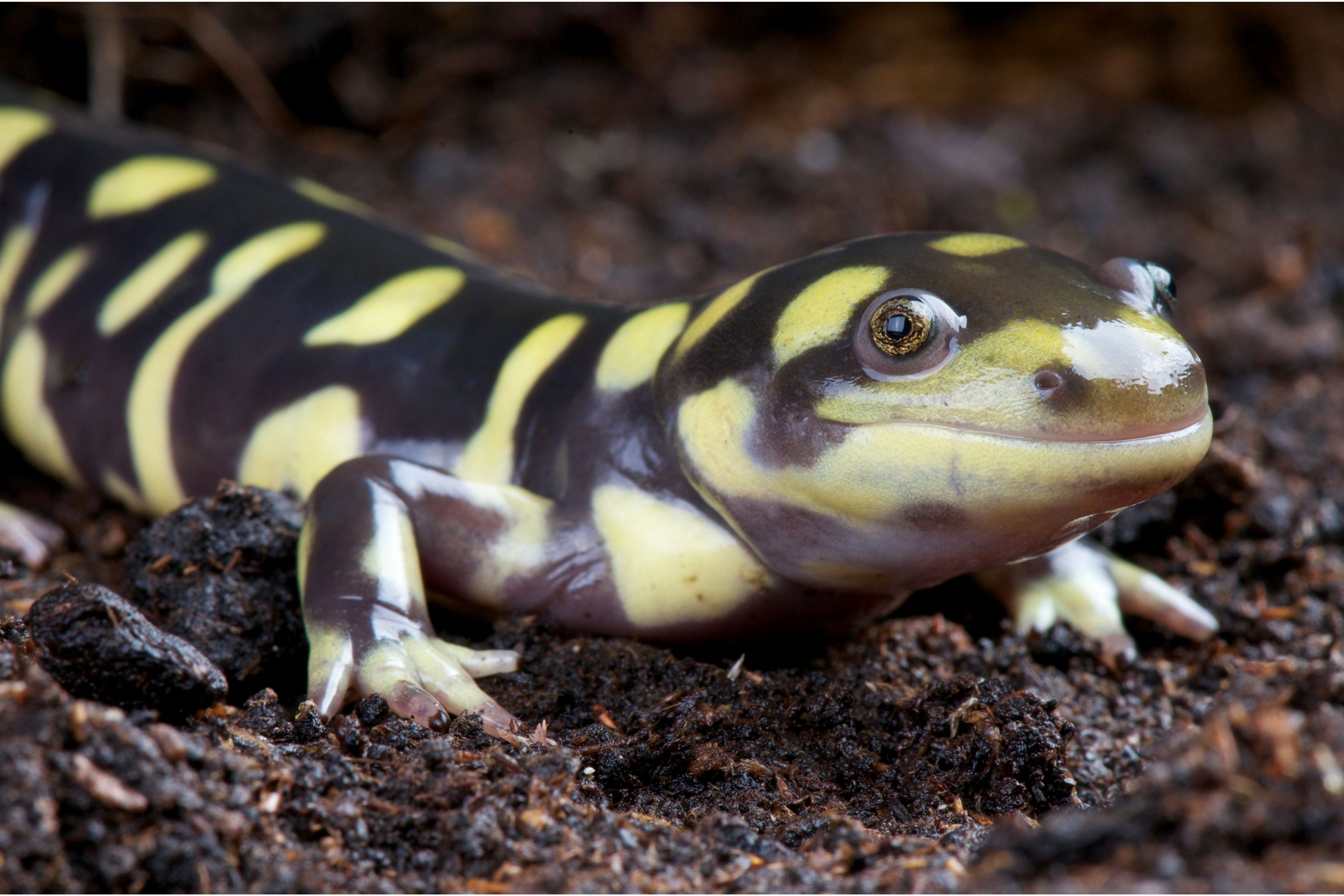Western tiger salamander
(Ambystoma mavortium)

Description
The barred tiger salamander or western tiger salamander (Ambystoma mavortium) is a species of mole salamander found from southwestern Canada in British Columbia, Alberta, Saskatchewan, and Manitoba, south through the western United States to Texas and northern Mexico. The barred tiger salamander typically grows from 15 to 22 cm (5.9 to 8.7 in) but it can grow to 30.5 cm (12.0 in) long at the most and is one of the largest species of salamander in North America. It has a broad head and a sturdy body. The color is variable across its range. The dorsal surface is grey, dark brown or black with bars and spots of muddy yellow giving it a tiger-like coloring. The ventral surface varies from light to dark. Larvae have alternating dark and light blotches on the centre of the dorsal surface and pale stripes running along the sides. The barred tiger salamander is found in western Canada and the western half of the United States, but infrequently in California and Nevada. In Canada it is known from British Columbia, Alberta, Saskatchewan and Manitoba. Its range in the United States extends to the southernmost tip of Texas, but no further east than the Dakotas and Oklahoma. It has been introduced into southern Arizona because its larvae are used as fish bait. It is a mainly terrestrial species and is found in lowland deciduous forests, coniferous forests and woodlands. It also inhabits open fields and rough ground, upland meadows, grasslands, semi-deserts and deserts and is occasionally found in streams. The barred tiger salamander is believed to have suffered some declines in population over several decades. These are likely to have been caused by deforestation and habitat loss. The introduction of non-native predatory fish may be an important cause of declines but this has not been investigated fully. The Sonoran tiger salamander was classified as an endangered species in 1997, due to the recent increase in human activities causing degradation and fragmentation to their habitat. The species is also threatened by various disease outbreaks carried by species not native to Arizona. The introduction of other species beginning to appear in their habitat can also be predators such as the crayfish.
Taxonomic tree:







